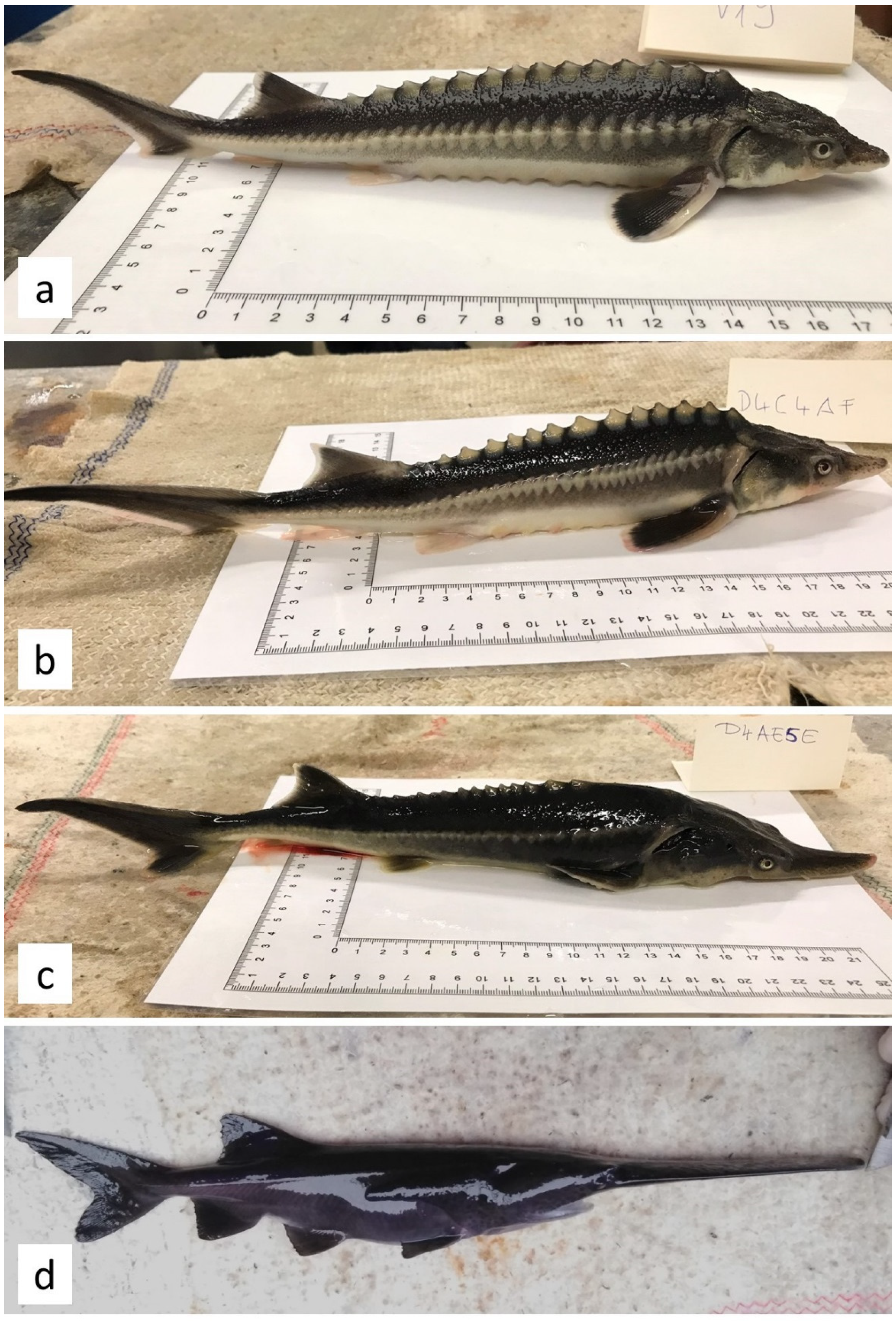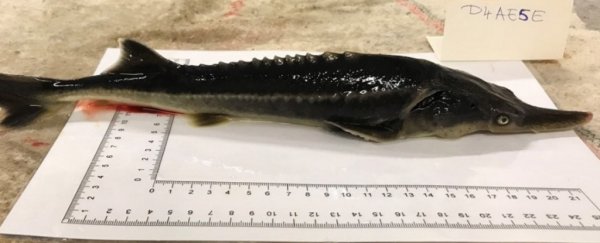You'd think at least 184 million years of evolution on entirely separate continents would be enough to make two species of fish sexually incompatible.
That was the assumption scientists in Hungary were going on when they placed sperm from an American paddlefish near eggs from a Russian sturgeon in the lab.
The idea was to coax the eggs from endangered sturgeon into reproducing asexually through a process called gynogenesis, which requires the presence of sperm without the introduction of any actual DNA.
The process clearly didn't quite go as planned. It seems DNA was transferred after all, unintentionally resulting in a whole new variety of fish that's come to be known as the "sturddlefish".
These odd-looking creatures are a bizarre mix of two wildly different-looking species, which might have never come into contact had humans not intervened.
Russian sturgeons feed along the floors of seas, lakes and rivers in eastern Europe, Serbia, and the Middle East. They are not found in the United States, not even as an introduced species.
As their name implies, American paddlefish can be found in the rivers of the United States, using their unusually long, paddle-shaped snouts to dig for food in the muck.
The offspring of these two species look, if possible, even stranger than their parents. Some half-resemble their mother and half-resemble their father, bearing classic sturgeon fins and snouts, along with typical paddlefish mouths and appetites.
Others look far more like sturgeons than paddlefish.
"I did a double-take when I saw it," aquatic ecologist Solomon David told The New York Times.
"I just didn't believe it. I thought, hybridisation between sturgeon and paddlefish? There's no way."
 (Kaldy et al., Genes, 2020)
(Kaldy et al., Genes, 2020)
Above: The top image features a typical Russian sturgeon; the bottom image is of an American paddlefish. The middle two images feature hybrid examples of the two.
It might seem impossible, but as different as these fish look, they hold remarkable similarities. Both species are known as living fossils, like crocodiles, because they have changed so little throughout their evolutionary history.
They both shared a common ancestor that lived during the age of the dinosaurs, and while that might seem like ages ago to us, for these fish that's a drop in the bucket.
"These phenomena could lead to a higher similarity, compatibility, and flexibility among the sturgeon genomes and allow the hybridisation between Russian sturgeon and American paddlefish despite the large geographical, physiological, and morphological distances," the authors argue.
That makes this quite a discovery, the team add, since other hybridisations between similarly distant taxinomic families have failed.
While these new fish are probably sterile, like other hybrids, they appear to survive at a similar rate to American paddlefish. Some are still alive and swimming today.
The scientists don't have plans to make any more of these hybrid fish, but they will continue studying how sturgeon and paddlefish reproduce in the hopes that they can save these fish from the brink of extinction.
Today, both these families of fish are seriously endangered. Just this year, the Chinese paddlefish went extinct, and the International Union for the Conservation of Nature reports that sturgeon are "more critically endangered than any other group of species".
Let's hope they're on the right track.
The study was published in Genes.
